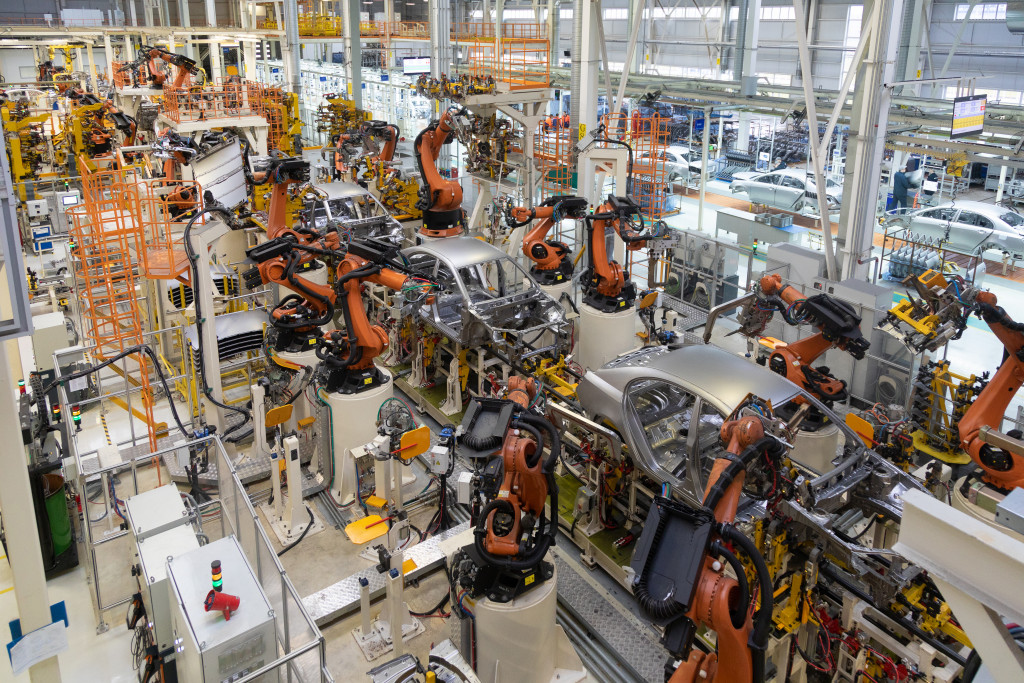When it comes to manufacturing computer parts, having a safe, secure, and temperature-controlled facility is essential. An ideal environment reduces the risk of damage to vital components while also increasing the speed and efficiency of parts production. Here are some factors to consider when building a controlled facility for your computer parts business.
Humidity & Temperature Control
The temperature and humidity conditions in your facility can directly impact the performance of your computer parts. In general, lower temperatures will reduce the risk of heat damage to sensitive components, while higher humidity levels can prevent corrosion.
To ensure optimal performance from your equipment, ensure that your facility has an air conditioning system that can precisely regulate both temperature and humidity levels. For example, you might choose a centralized unit with temperature and humidity sensors that can be set to the exact levels you require.
In addition, you may want to consider adding fans and dehumidifiers to increase airflow and reduce moisture buildup. These systems can help maintain optimal computer parts conditions without additional power.
Temperature Variations & Fluctuations
Temperature variations cause inconsistencies in the production process and can lead to defective products. To minimize these fluctuations, you should install an HVAC system that utilizes dual thermostats—one for heating and one for cooling—to maintain a consistent temperature throughout the day.
You should also consider installing additional insulation around doors and windows to help keep temperatures consistent between different areas of the building. For instance, adding insulation can help prevent hot air from entering the facility on a warm day and cool air from escaping on a cold one.
Moreover, you may want to install a temperature monitoring system that alerts you if the temperature in your facility rises or falls beyond a certain point. This can help you quickly identify and address any issues before they cause damage to your computer parts.
Dust Control & Filtration
Dust particles can easily damage delicate components in computers, leading to costly repairs or replacements down the line. To protect against dust contamination, you should invest in high-efficiency air filters that are designed specifically for industrial environments.
Additionally, ensure that any ventilation ducts are properly sealed, so that dust particles don’t leak into other areas of the facility or onto nearby electronics or machinery. You can do this by installing filters and air curtains at the entrances of your building or by using special floor mats to trap dust particles before they enter.
Also, schedule regular maintenance checks to ensure that your air filters and ducts are in good condition and free from buildup. This will help keep your facility clean and dust-free, reducing the risk of damage to your computer parts.

Cleanroom Building and Maintenance
In some cases, you may need to build a specialized cleanroom for your facility. Cleanrooms are designed to keep dust and other contaminants out by using controlled air circulation, pressure levels, and special filtering devices.
If you’re considering building one, it’s important to find an experienced cleanroom contractor who can design and construct the room according to your needs. They should also provide regular maintenance visits to ensure that the cleanroom is running at peak efficiency and all parts are in good condition.
This can help you ensure that your computer parts are always in excellent condition and remain safe from dust and other contaminants.
Lighting & Electrical Safety
You’ll need adequate lighting throughout your facility in order to ensure safety as well as product quality. Install LED lights with adjustable brightness settings so employees can see clearly when carrying out their tasks without causing unnecessary strain on their eyesight or creating glare on surfaces where computer parts are being assembled or tested.
Additionally, make sure all electrical wiring is up-to-date and meets current safety standards so that workers aren’t exposed to potential hazards such as electric shock or fire hazards due to faulty wiring or outdated equipment.
For example, you should consider installing surge suppressors and other protection devices to help regulate power surges and keep your facility safe from electrical hazards.
Security & Accessibility
Finally, you’ll need effective security measures in place in order to protect your valuable assets from theft or unauthorized access. Ensure all entrances are securely locked at all times and equip them with electronic locks if necessary—such as biometric scanners or keycard readers—so only authorized personnel can access certain areas within the building.
Additionally, install motion sensors with video surveillance cameras inside and outside the facility for added security measures when needed. This can come in handy if you ever need to review footage or evidence in case of theft or other security breaches.
You can also establish an access control system to ensure that only those with the proper clearance are allowed in certain areas. This will help you maintain a secure environment for your computer parts and prevent any theft or tampering.
Building a controlled environment for storing computer parts is essential if you want them to perform optimally without any unexpected problems arising from environmental factors such as dust contamination or extreme temperature fluctuations. By considering these factors — you’ll be able to create an ideal environment for producing high-quality products quickly and efficiently. With some careful planning, you can save time, money, and headaches later on.



